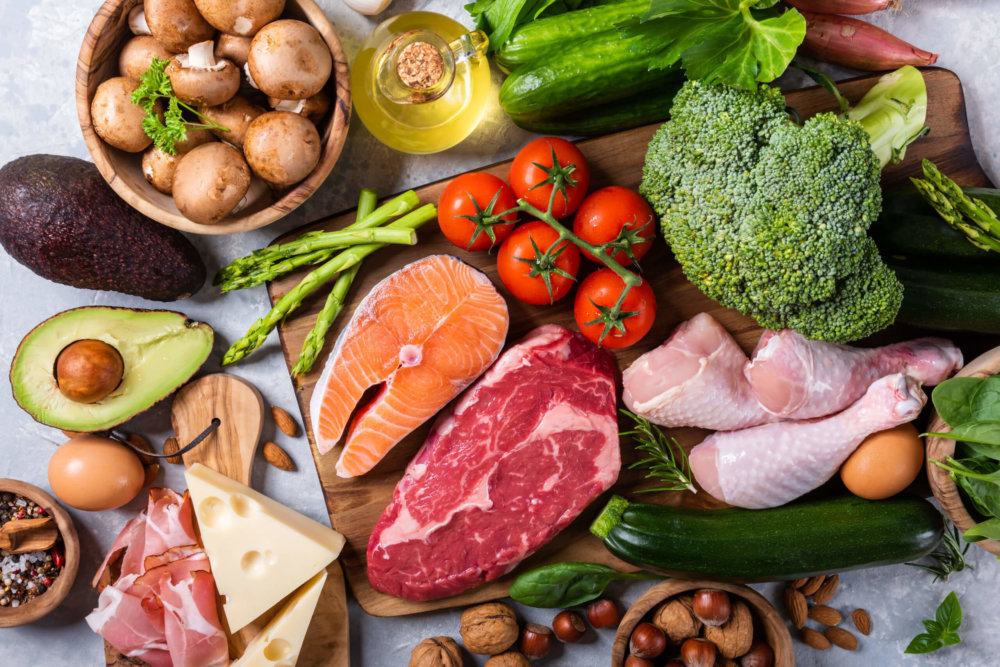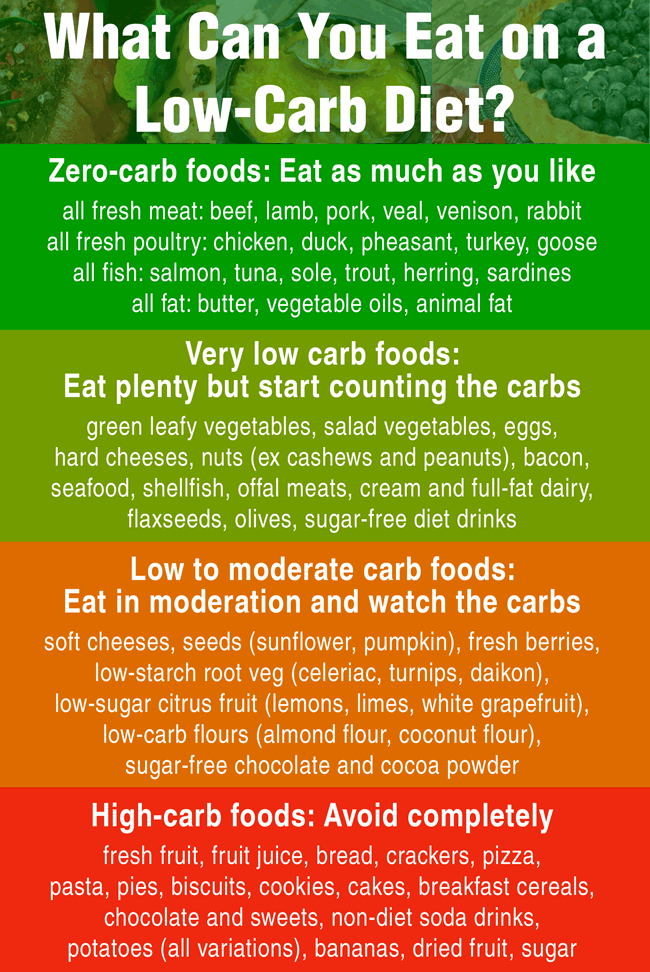
What is Keto?
A Keto Diet is a weight loss plan that helps you lose weight through ketosis.
Ketosis is a natural metabolic state of burning fat for energy instead of carbohydrates. Once in ketosis, your body starts using its own fat reserves for fuel.
You switch into ketosis by cutting out most carbohydrates from your diet. To get the energy you need, the diet replaces carbs with fat. So Keto Diet is high in fat, very low in carbs and moderate in protein.
Losing weight while in ketosis is easy – pounds just melt off. Your energy levels soar. Best of all, you don’t ever feel hungry because of all the rich, mouth-watering Keto food you get to eat.
But to stay in ketosis, you must follow the diet’s rules precisely, and all the time. There are no “cheat meals” on Keto, or “being good most of the time” workarounds.
Is Keto Diet a recent invention?
Keto Diet has a very long track record. It was originally used to treat epilepsy and diabetes back in the 1920s. Gradually, its benefits for weight loss were noticed too.
In 1972, Dr Atkins devised his famous low-carb diet based on ketogenic principles. The first phase of Atkins (Atkins Induction) is almost identical to Keto.
In recent years, scientific research debunked many persistent myths about dietary fat. We now know that the likely cause of heart disease and obesity is the overconsumption of carbs rather than fat. Your body converts unused carbs into fat then stores it on your hips, tummy and so on.
Keto Diet is becoming very popular again, along with other low-carb diets and new food approaches such as Paleo.
Why is Keto Diet so effective?
Keto has several major benefits compared to low-fat or calorie-restriction diets.
- No hunger. Keto is high in fat, so most people find it very filling and satisfying. You lose weight without feeling hungry at all!
- Faster weight loss. Recent studies show that low-carb diets are more effective at weight loss than low-fat diets.
- Good for your heart. Keto helps to increase the levels of good cholesterol (HDL) and improve the composition of LDL. It can reduce blood pressure. Overall, contrary to the ignorant myths spread by the media, Keto Diet is actually good for the health of your heart.
- Reducing visceral fat. Keto is effective at reducing unhealthy fat stored around the abdomen.
- Reducing insulin sensitivity. Keto improves insulin sensitivity, helping to prevent type 2 diabetes and reduce metabolic resistance (a hormonal imbalance that makes it difficult to lose weight).
How much weight can I lose on the Keto Diet?
This is impossible to predict precisely. Each person will have a different weight loss rate, depending on their starting weight, fat percentage, age, gender, activity levels and genetics.
Generally, people who are moderately overweight (with a Body Mass Index of up to 30) can expect to lose between 1-3 pounds a week.
People who have more weight to lose (with a Body Mass Index of above 30) might enjoy a faster loss rate initially – up to 4-6 pounds a week. But this will slow down as they get closer to their target weight.
These figures are estimates only – your own weight loss rate may be either faster or slower.
Related post: How to speed up a sluggish metabolism
What can I expect after starting Keto?
The stages listed below are common to all Keto dieters, but the duration of each period varies by individual. The numbers below are approximate.
Days 1-3
You have some carbohydrates stored in your body as glycogen. During the first days of your Keto Diet, your body uses up those stored carbohydrates. So you won’t feel any different to pre-Keto.
Days 3-7
Your glycogen stores run out. Your body demands more carbs for energy. But you have cut out most carbs from your diet and replaced them with fat.
It usually takes several days for your body to adjust to this new regime. This is the hardest period of the Keto Diet.
You might get strong sugar cravings, tiredness and the infamous “Keto flu”. There are ways to make this transition period easier.
You will not notice any weight loss yet at this stage. Some people report a small weight gain – this is a short-term fluctuation, so don’t panic.
Related post: How to fight Keto flu
Days 7-14
Your body makes the switch to burning fat for energy, instead of carbs. You break into ketosis.
Keto flu symptoms disappear completely. Your energy levels soar. You don’t feel hungry at all. Overall, you feel amazing.
Best of all, you start losing weight – faster than ever before. Some of this initial weight loss will be “water weight”. Carbs make your body retain water, and you lose some of those water stores when in ketosis. But you will be losing actual fat too.
Day 14 onwards
You settle down into your new diet. You are losing weight steadily, without feeling hungry.
Week 4-5
You are now fully Keto-adapted. Your body became used to burning fat efficiently.
You are gliding towards your ideal body quickly and hassle-free!
How long does it take to get into ketosis?
Most people switch into ketosis within 3-7 days of starting Keto Diet.
Sometimes it takes longer, up to 2 weeks. You can take steps to speed up ketosis.
What will I eat on Keto?
The list below is for general guidance only. You will need to count your carbs precisely, at least at the beginning of your diet.
DOWNLOAD PRINTABLE LIST (PDF) >>

Zero carb foods – eat as much as you like
- All meat: beef, lamb, pork, veal, venison, rabbit
- All poultry: chicken, duck, pheasant, turkey, quail, goose
- All fish: salmon, tuna, sole, trout, herring, sardines
- All fat: butter, olive oil, nut-based oils
Very low carb foods – eat plenty, but start counting the carbs
- Green leafy vegetables
- Salad vegetables
- Eggs
- Hard cheeses
- Seafood and shellfish
- Offal meats (liver, kidneys)
- Cream and full-fat dairy
- Flaxseeds
- Olives
- Zero-calorie sugar substitutes and sugar-free diet drinks*
Low to moderate carb – eat occasionally, and watch the carb content closely
- Soft cheeses
- Nuts (except cashews and peanuts)
- Seeds (sunflower, pumpkin)
- Low-starch root vegetables (celeriac, turnips, daikon)
- Fresh berries
- Low-sugar citrus fruit (lemons, limes, white grapefruit)
- Low-carb flours (almond flour, coconut flour)
- Sugar-free chocolate and cocoa powder
High carb foods – avoid completely
- Any food that contains sugar or grains (e.g. wheat, rye, oats, rice)
- Bread and crackers
- Pizza, pasta, pies, any other dough-based food
- Biscuits and cakes
- Breakfast cereals
- Chocolate and sweets
- Fizzy soda drinks (except diet versions)
- Fresh fruit, fruit juices, dried and tinned fruit
- Potatoes in all variations
- Bananas
* Artificial sweeteners and sugar-free products are technically low in carbs. However, they might have some negative effects. Be cautious with this type of food – it is not as safe as natural low-carb foods.
DOWNLOAD PRINTABLE LIST (PDF) >>
How many carbs can I eat on Keto?
You will have to cut your carbs down dramatically. Most people limit their carbs to 20-30g a day to stay in ketosis.
Keto Diet works best if you spend your carb allowance on the most nutritious, vitamins-rich foods, for example, green leafy vegetables and grass-fed red meat.
Will I get enough vitamins on Keto?
You will cut out some high-vitamin foods from your diet, mostly fruit and grains. But you can still get everything you need from low-carb foods.
Vegetables have roughly the same amounts of vitamins and minerals as fruit. Meat, fish, seeds and healthy fats are also high in vitamins and other essential nutrients.
If you worry about your vitamin intake, support your Keto diet with a high-quality specialist multivitamin.
Is Keto hard?
Keto is not as hard as other types of diets. Not being hungry all the time makes a huge difference. You get to enjoy rich, satisfying Keto meals while losing weight.
But you have to follow Keto rules precisely. Unlike other diets, just one small transgression can kick you out of ketosis. Your weight loss then stops until you get back on track.
You have to learn all about carbs and get into the habit of checking and monitoring them continuously. But it is possible to do this painlessly and efficiently.
Is Keto similar to other low-carb diets?
Keto Diet is a low-carb diet. But not all low-carb diets are ketogenic.
The only popular diet that’s very similar to Keto is Phase 1 of Atkins. Watch out for recipes and foods labelled as low-carb. They may be suitable for generic low-carb diets, but not go low enough for Keto.
Keto is not the same as Paleo or Caveman diets. Paleo focuses on eating natural foods, some of which are high in carbs.
Is there any reason not to do Keto?
Keto is a safe way to lose weight. It is suitable for all people who are generally healthy.
As is the case with any other diet plan, please first consult your doctor if:
- you have a medical condition or are under medical supervision for any reason
- you are on any prescription medications
- you are pregnant or breastfeeding
- your Body Mass Index is over 30
- you would like to lose over 30% of your current weight
- you are under 18 or over 65 years old